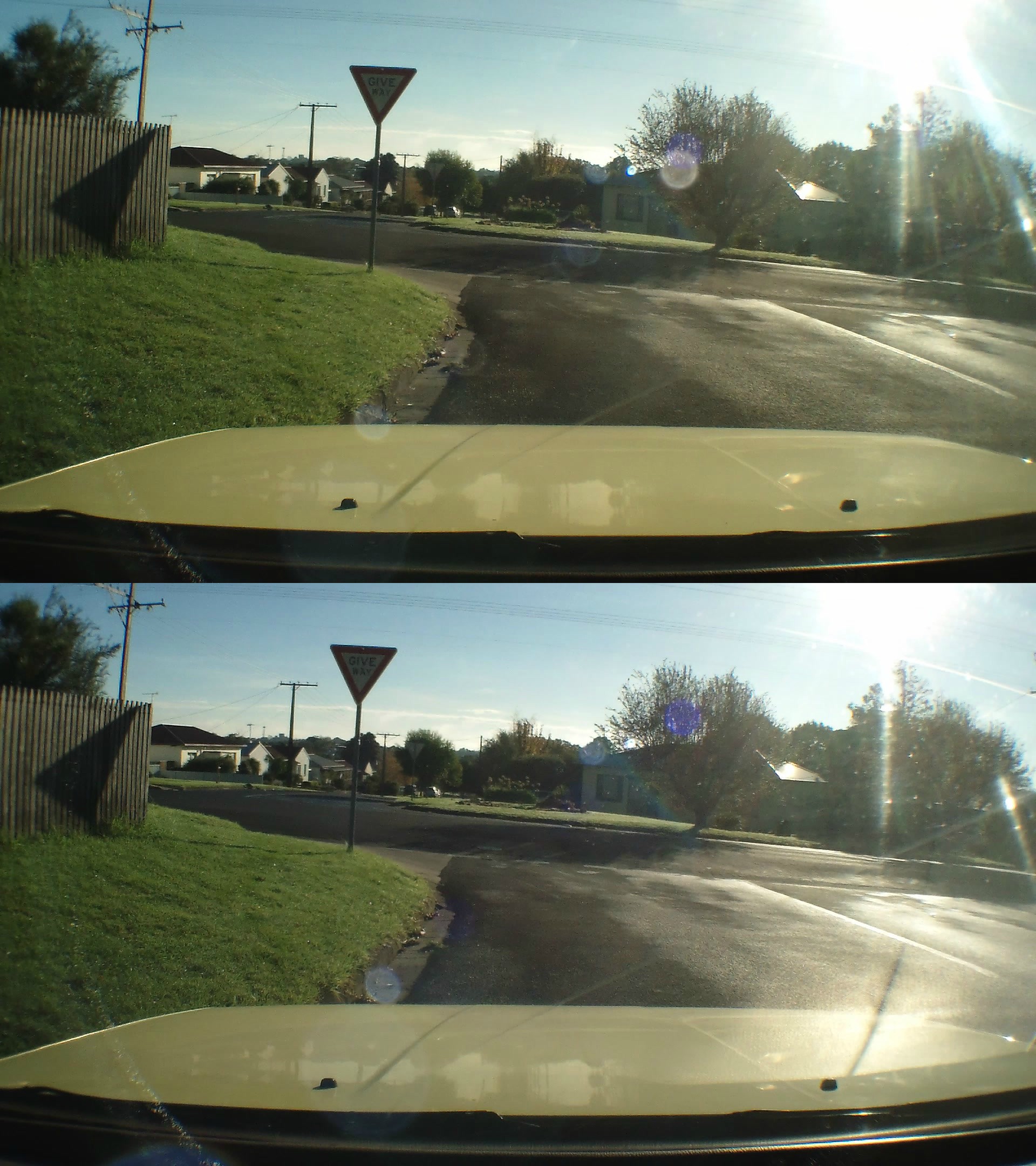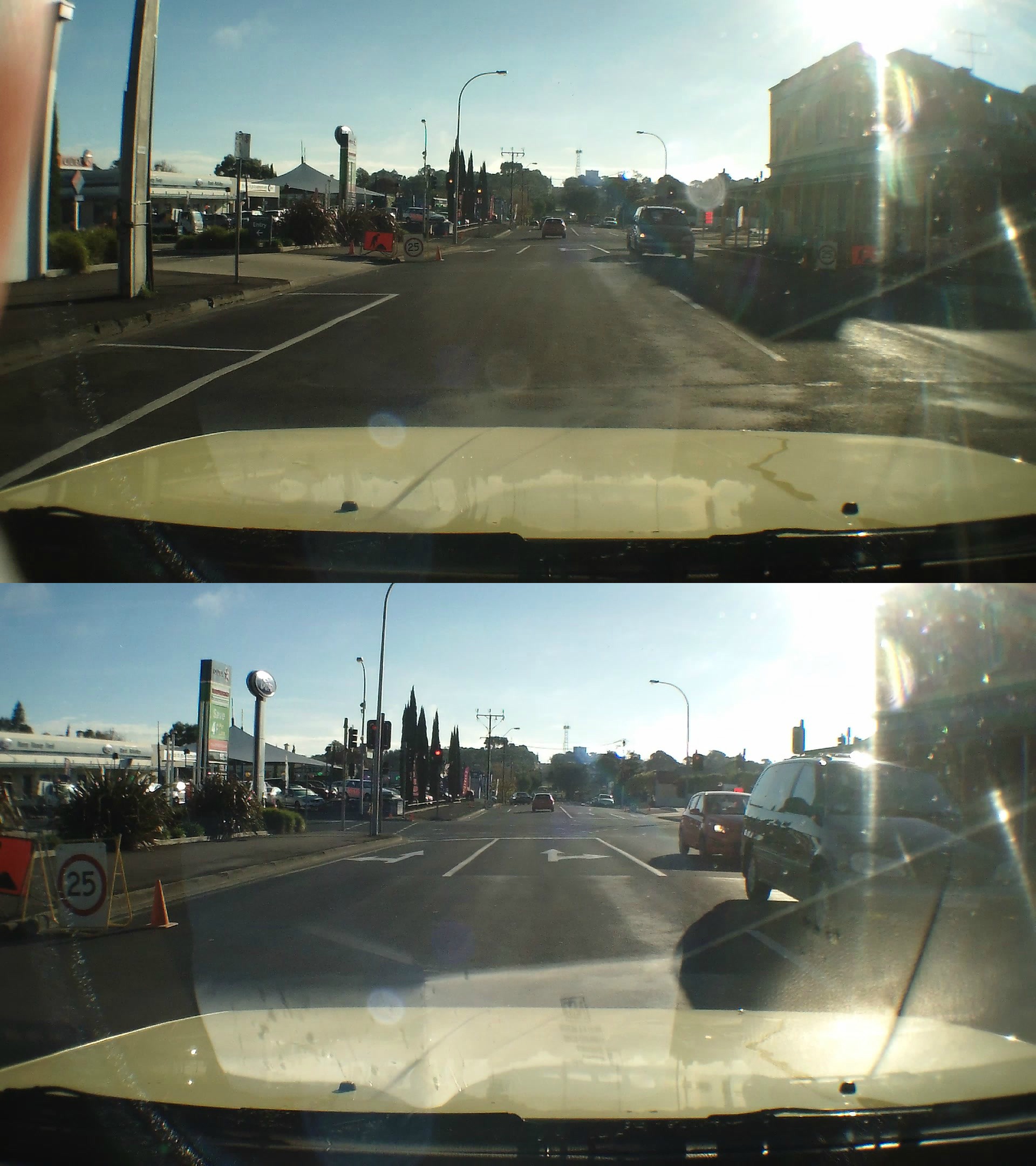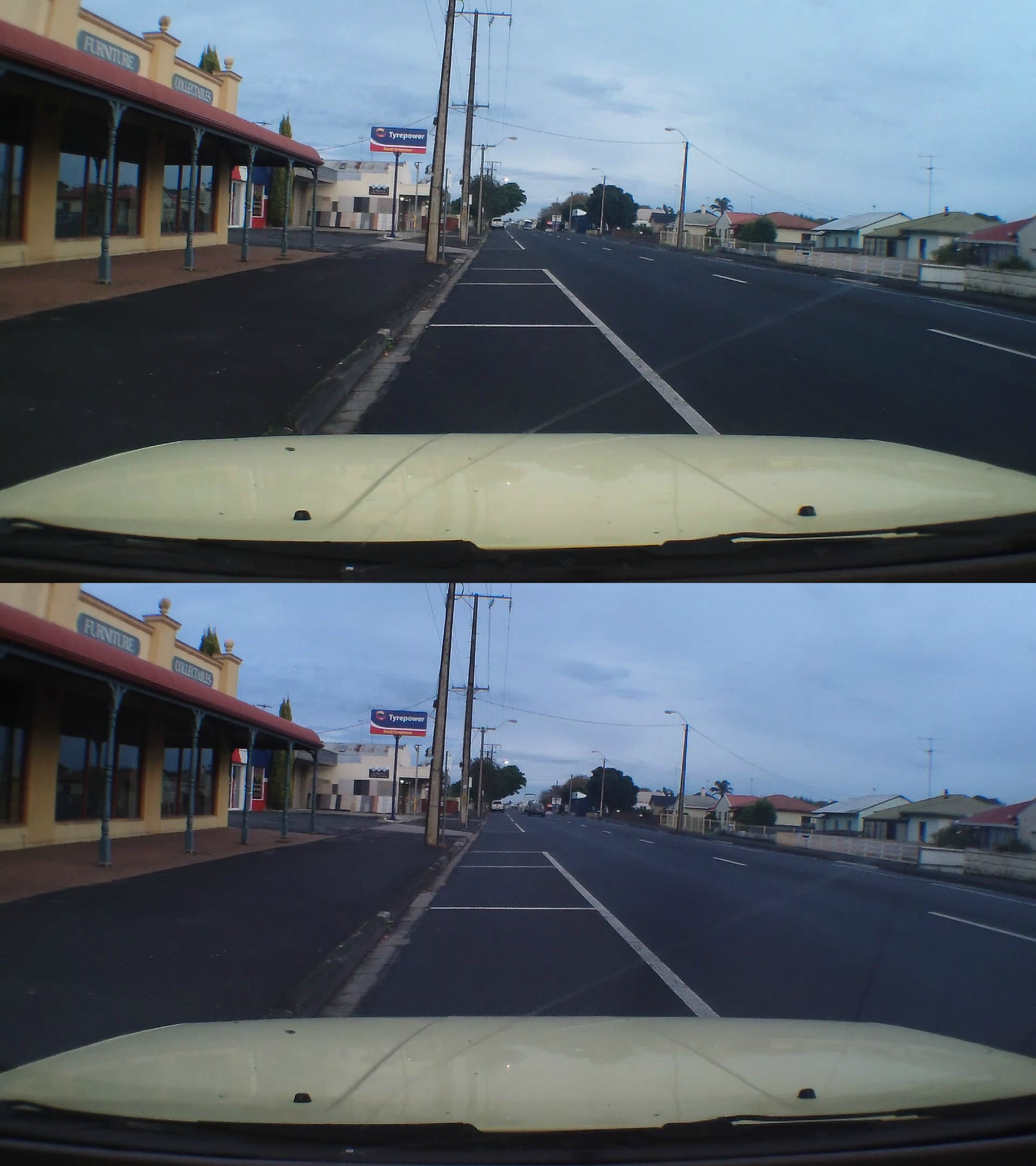winterseed
New Member
- Joined
- May 21, 2014
- Messages
- 16
- Reaction score
- 6
- Location
- Mount Gambier, SA
- Country
- Australia
- Dash Cam
- G1W-C, 808 #16, Kodak PlayTouch + FE-12
Hello good people! I signed up to share my experience so far with this little project.
The filter is just a piece of the lens from some disposable cinema 3D glasses. The first video has some examples with and without the filter on a sunny morning after rain the night before. Keep in mind that most of this is shot in deliberately awful conditions and my windscreen has 20+ years of wear & tear. Also, my camera (Kodak PlayTouch) has abysmal dynamic range and is a bit dumb with exposure sometimes. Enjoy:
The next video shows how I attach the filter to my cam and has a bunch of early morning test footage from a few days ago when it was overcast:
And some unedited comparison pics pulled from the video (filter on top, no filter on the bottom):






I'm pretty happy with it apart from the rainbow streaks which I guess are the result of imperfections in the filter. Apologies if my formatting/embedding results in tragedy. I tried.
The filter is just a piece of the lens from some disposable cinema 3D glasses. The first video has some examples with and without the filter on a sunny morning after rain the night before. Keep in mind that most of this is shot in deliberately awful conditions and my windscreen has 20+ years of wear & tear. Also, my camera (Kodak PlayTouch) has abysmal dynamic range and is a bit dumb with exposure sometimes. Enjoy:
The next video shows how I attach the filter to my cam and has a bunch of early morning test footage from a few days ago when it was overcast:
And some unedited comparison pics pulled from the video (filter on top, no filter on the bottom):






I'm pretty happy with it apart from the rainbow streaks which I guess are the result of imperfections in the filter. Apologies if my formatting/embedding results in tragedy. I tried.
